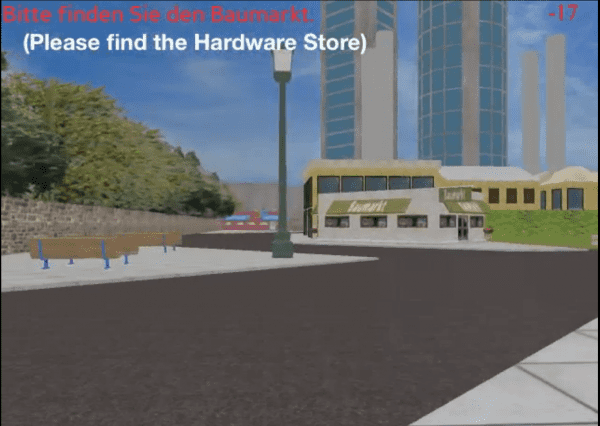
Trying to better understand how memories are stored inside a human brain, researchers from the University of Pennsylvania and Freiburg University used a video game in which people navigate through a virtual town delivering objects to specific locations; they found that brain cells add a geo-tag with spatial information to some memories, and this spacial information is activated immediately before the memory is recalled. Their work shows how spatial information is used in memories and why recalling a certain experience can quickly bring to mind the place where it happened.
“These findings provide the first direct neural evidence for the idea that the human memory system tags memories with information about where and when they were formed and that the act of recall involves the reinstatement of these tags,” said Michael Kahana, professor of psychology in Penn’s School of Arts and Sciences.

Prior to this experiment, Kahana and his colleagues had been studying epilepsy patients, trying to determine what happens inside of the patients’ brain, and the changes that occur during a seizure. In order to do this, they used patients which had electrode implanted in their brains, as part of their treatment, because the electrodes also transmit information from the patients’ brain.
Inspired by their previous research, they conducted a study which involved playing a simple video game on a bedside computer; the game was basically all about making deliveries to stores in a virtual city. Initially, volunteers had a period of time to make themselves familiar with the city, before the deliveries began. After that, the game began, and participants were only instructed where their next stop was, without being told what they were delivering. After they reached the destination, the game revealed what the item actually was and gave them the next stop.
After 13 deliveries, the game ended, and participants were asked to name as many items as possible, in whatever order they found easiest. Researchers tracked the neural activation associated with the formation of spatial memories (location of the stores), and the recall of episodic memories (the items that were delivered.
“A challenge in studying memory in naturalistic settings is that we cannot create a realistic experience where the experimenter retains control over and can measure every aspect of what the participant does and sees. Virtual reality solves that problem,” Kahana said. “Having these patients play our games allows us to record every action they take in the game and to measure the responses of neurons both during spatial navigation and then later during verbal recall.”
By asking participants to recall the items they delivered instead of the places they visited, they checked whether spatial memory systems were being activated even when episodic memories were being accessed. They found that the “place cells” were also activated, even though the volunteers were only thinking about the items.
“During navigation, neurons in the hippocampus and neighboring regions can often represent the patient’s virtual location within the town, kind of like a brain GPS device,” Kahana said. “These so-called ‘place cells’ are perhaps the most striking example of a neuron that encodes an abstract cognitive representation.”


